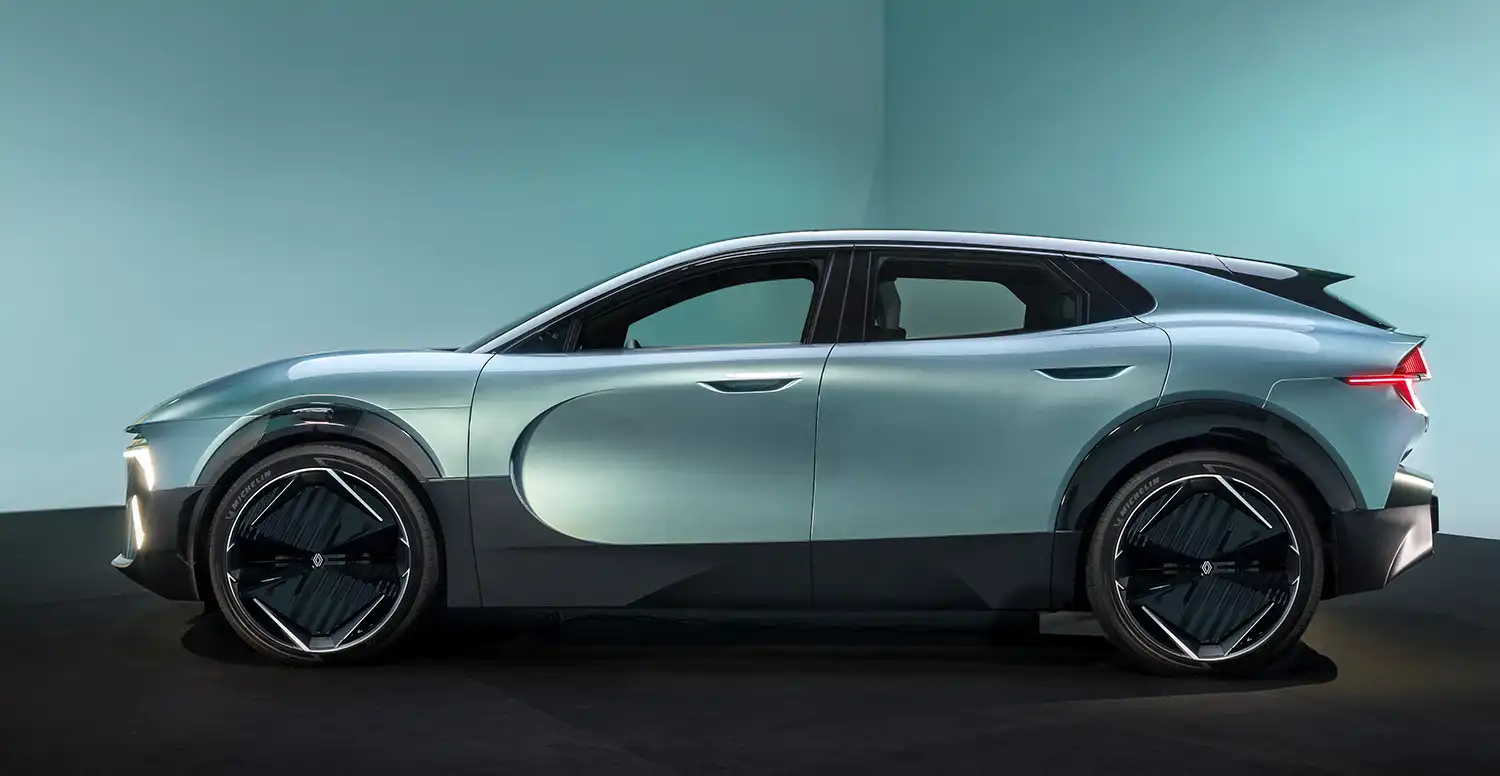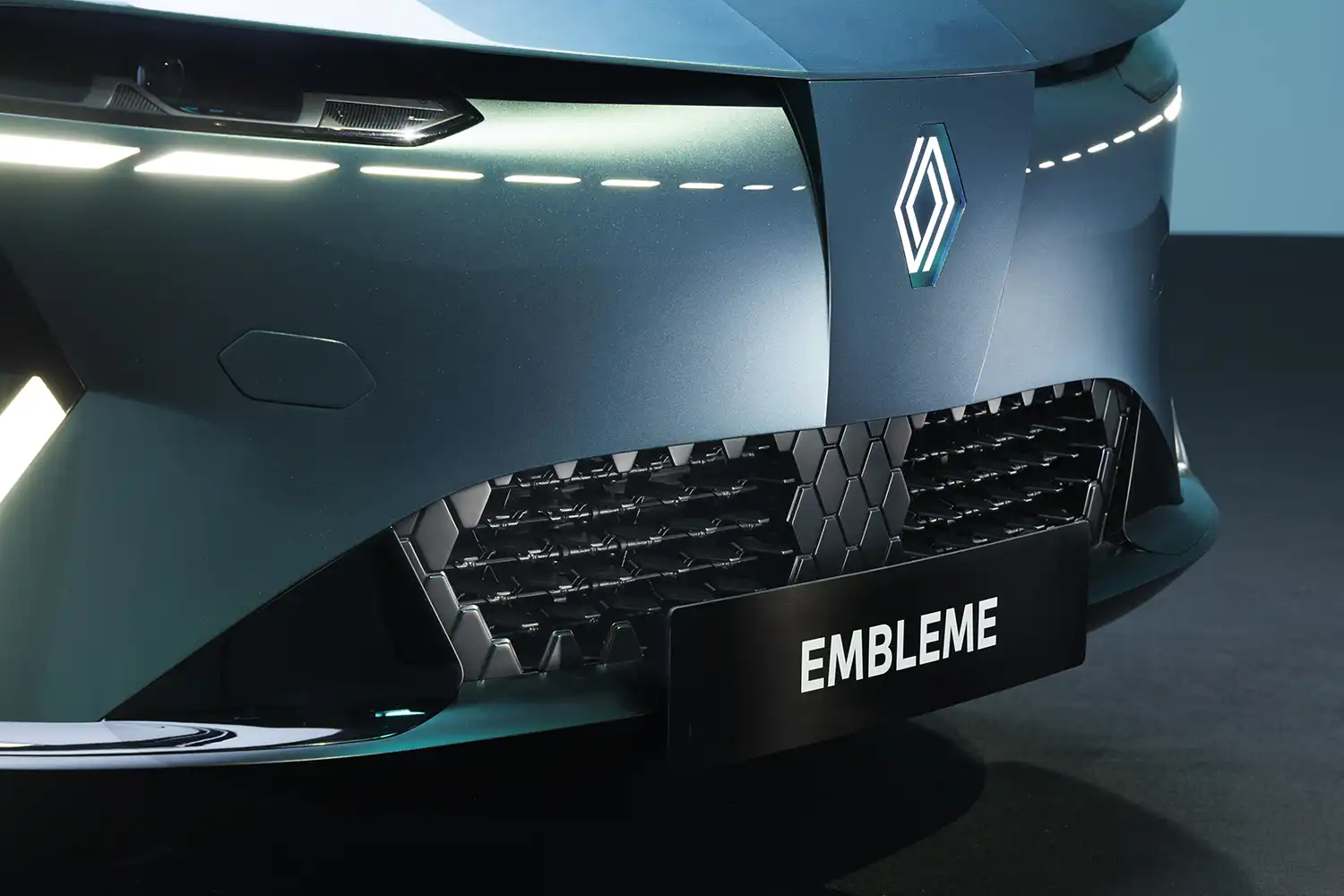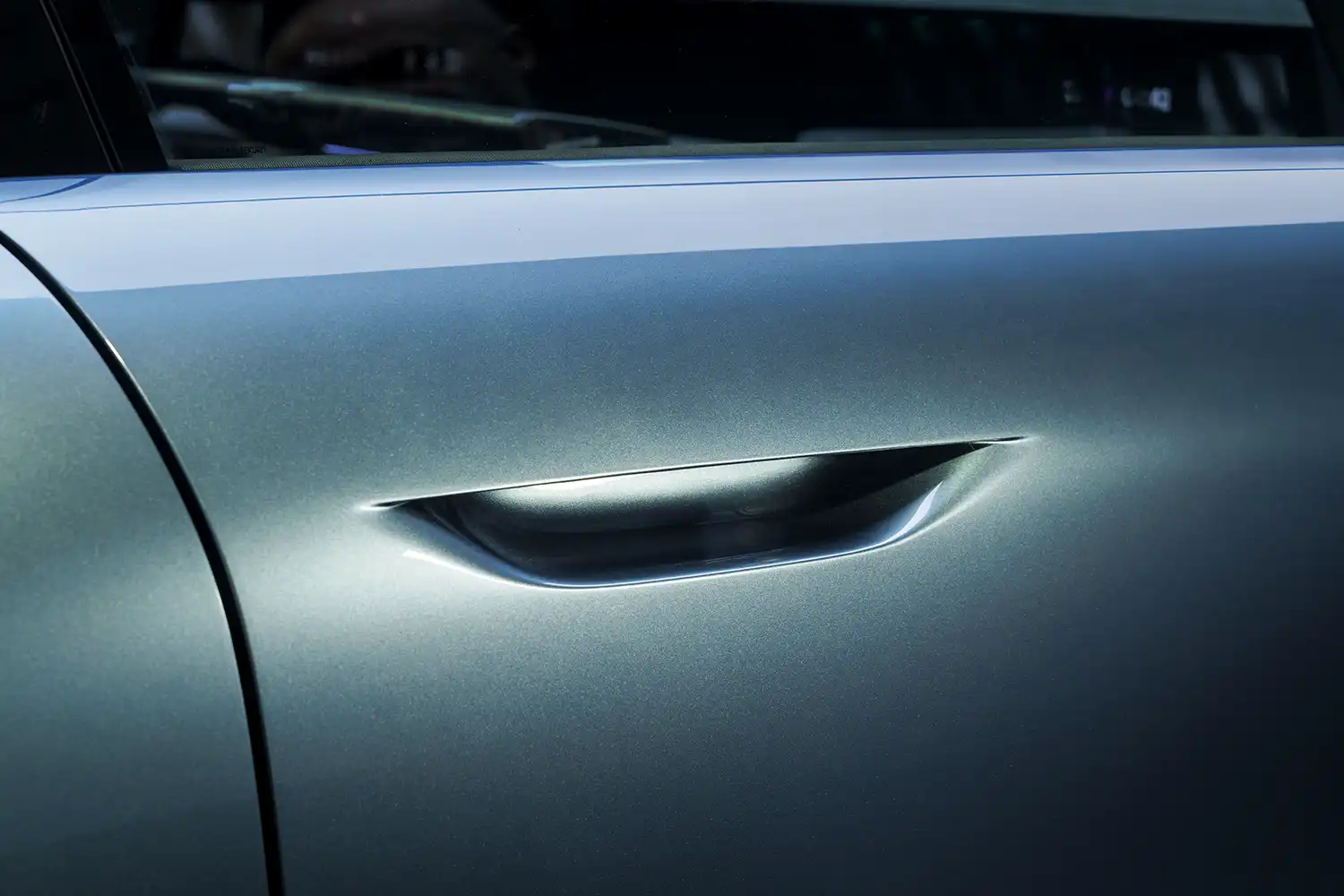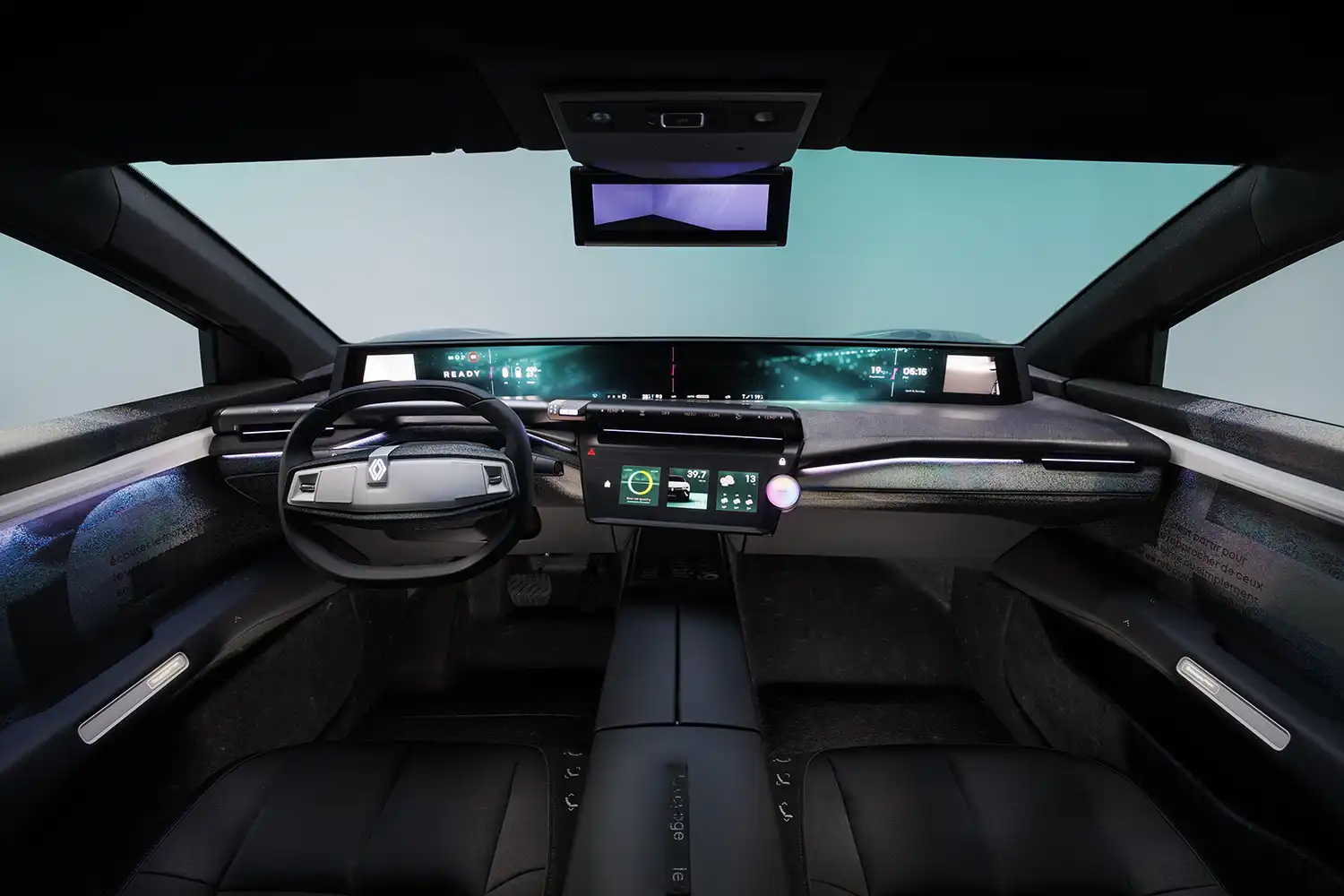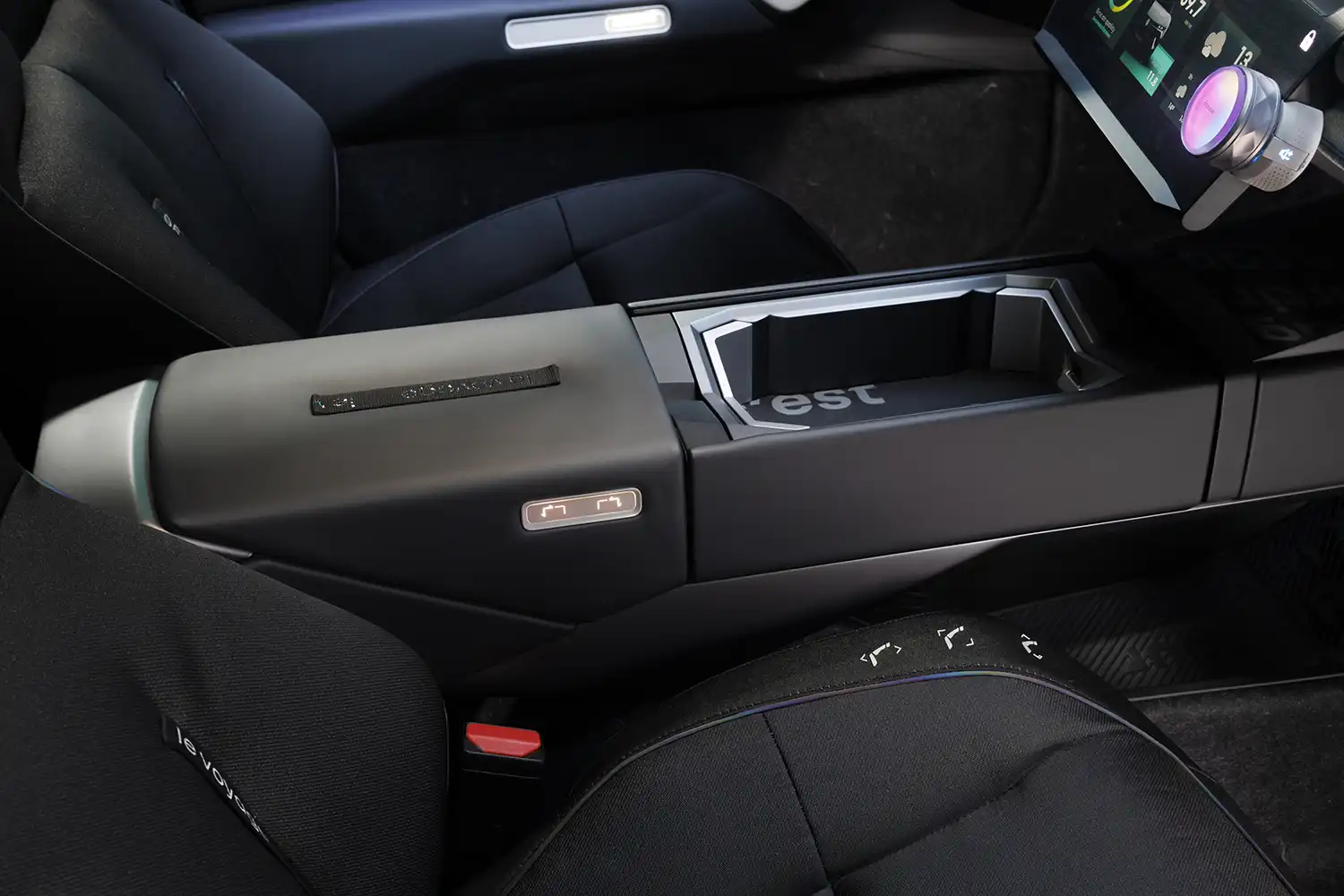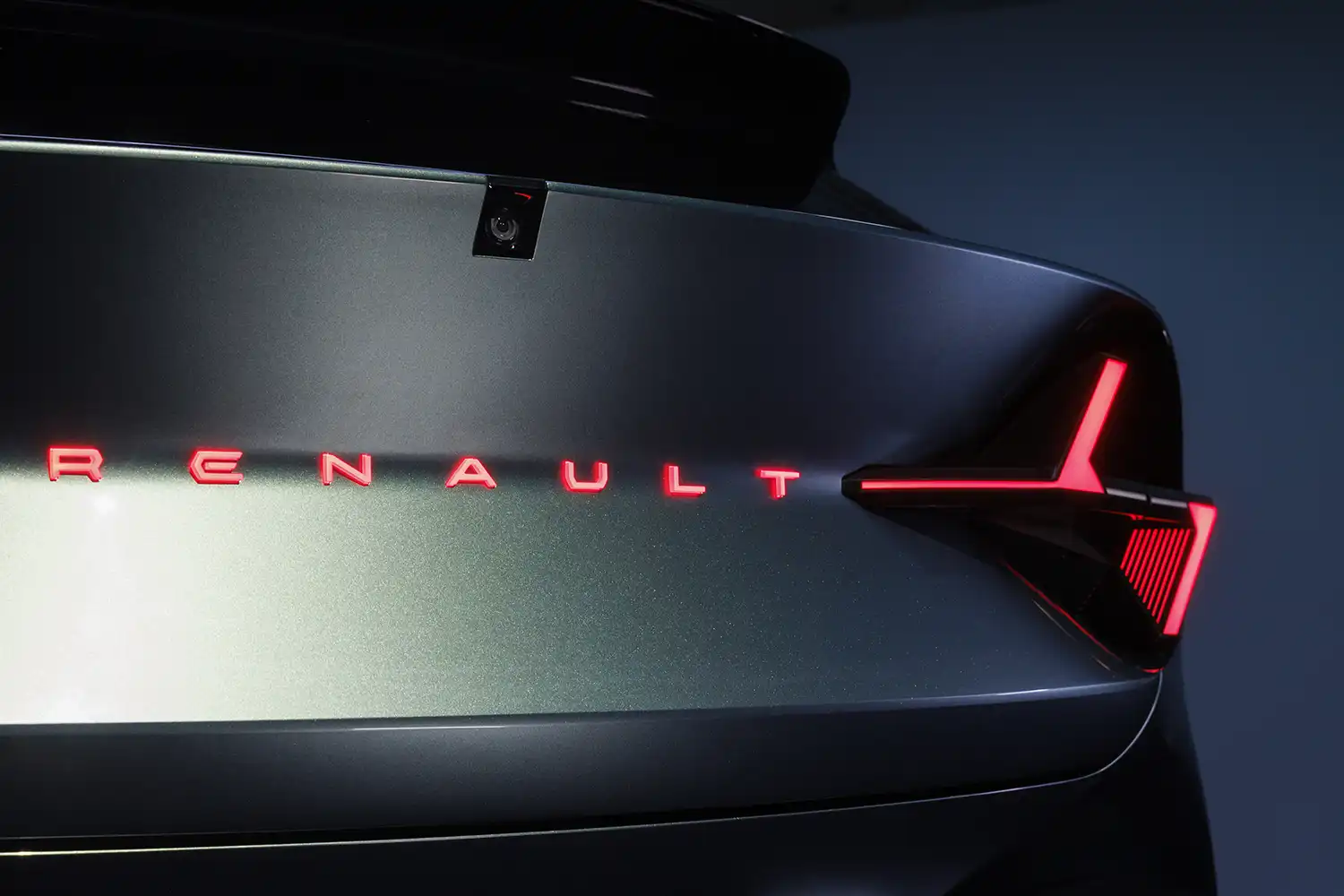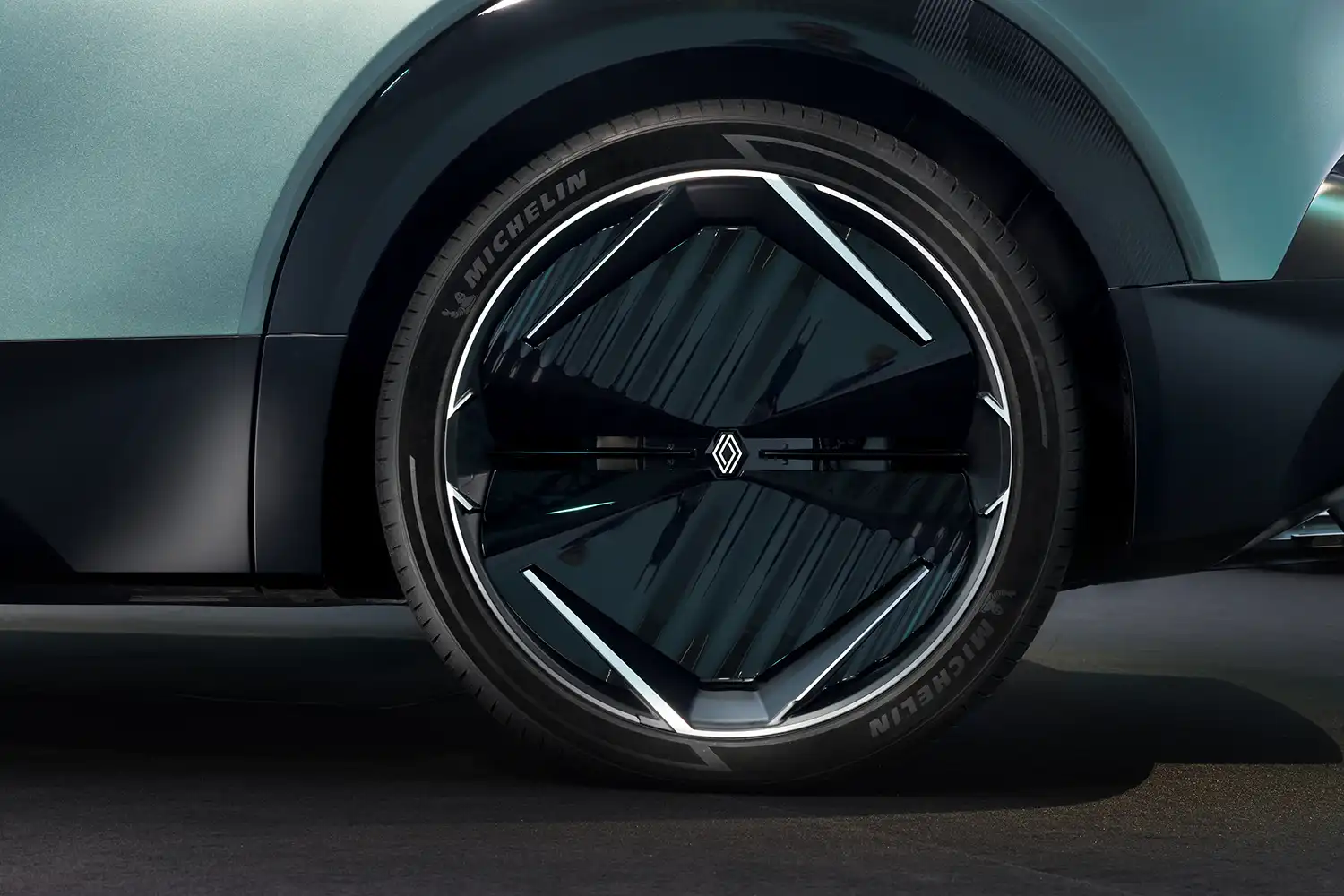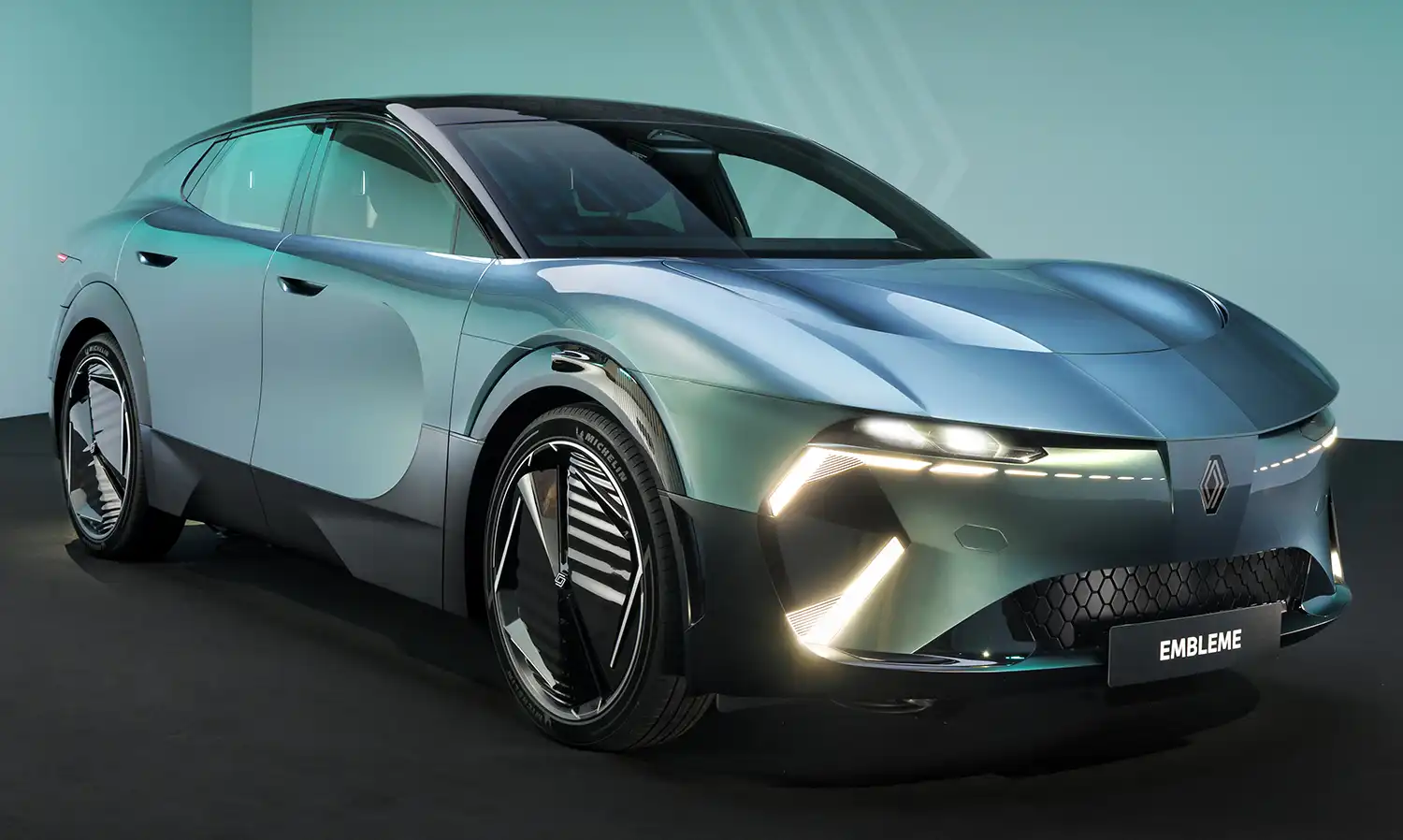
Responding to the urgent global challenges of climate change and resource conservation, the automotive industry is undergoing a significant transformation. Renault is actively contributing to this shift with the Embleme, a demonstrator vehicle that builds upon the exploratory work initiated with the Scenic Vision concept in 2022. This project aims to create a functional prototype of a spacious, comfortable, and technologically advanced family car while pushing the boundaries of decarbonization across its entire lifecycle.
Powertrain and Performance Details: The Renault Embleme features a dual-energy electric powertrain combining a 40 kWh NMC (Nickel Manganese Cobalt) battery and a 30 kW PEMFC fuel cell powered by a 2.8 kg low-carbon hydrogen tank. This rear-wheel drive architecture, built on the AmpR Medium platform, allows for a range of up to 1,000 km with zero tailpipe CO2eq emissions. For shorter distances, it operates as a conventional electric vehicle, utilizing regenerative braking and potential roof-mounted photovoltaic cells for battery charging. For longer journeys, the hydrogen fuel cell actively contributes power, enabling quick refueling stops of under five minutes for approximately 350 km of range each. The vehicle is equipped with a wound-rotor electric motor, notably free of rare earth materials.

Decarbonization Strategy: The Renault Embleme project targets a 90% reduction in greenhouse gas emissions (CO2eq) over its entire life cycle compared to a 2019 baseline. This ambitious goal is pursued through a comprehensive five-pillar approach: eco-design, resource selection, production, use, and end-of-life management. Notably, 70% of the carbon footprint associated with parts production has been reduced through strategic material choices and collaborations with over twenty expert partners. Furthermore, 50% of the vehicle’s materials are recycled, and nearly all materials are designed to be recyclable at the end of the car’s service life.
Eco-Design and Materials: Ampere spearheaded an ultra-efficient eco-design process, meticulously considering the carbon footprint at every stage, from initial design to material selection. The vehicle strategically utilizes seven key material categories (battery, steel, aluminium, polymers, electronic components, tyres, fuel cell and tank) that constitute 90% of the carbon footprint. Innovative solutions include lightweight, single-material interior insulation from Autoneum with a 70% carbon footprint reduction, aluminium doors from Constellium utilizing both low-carbon and recycled aluminium, and alloy wheels from Dicastal made with 70% recycled aluminium. Interior coverings from Forvia incorporate recycled and natural materials like linen and pineapple fibers, which also act as carbon sinks.
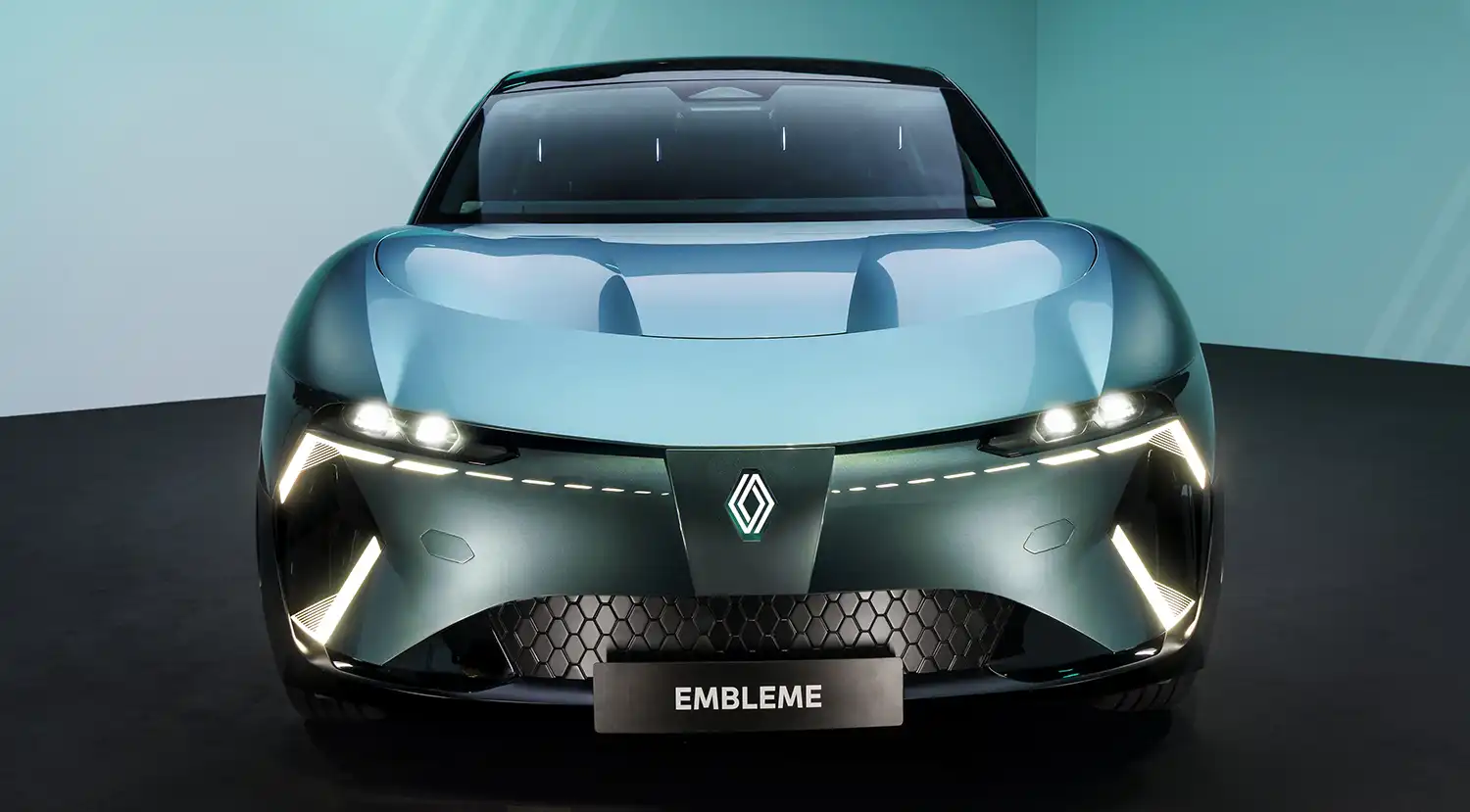
Innovative Technologies: The Embleme showcases several advanced technologies aimed at reducing its environmental impact and enhancing user experience. Forvia Hella’s headlights achieve a 50% reduction in lifecycle CO2eq emissions through optimized design and material use. Michelin’s specially designed Primacy tyres significantly lower rolling resistance, improving vehicle durability and reducing the tyre’s carbon footprint. Valeo’s complete windscreen wiper system, featuring a brushless motor and recycled materials, achieves a 60% CO2eq emission reduction. The interior features a striking 1.2-meter-long openR panorama screen and a Shy Tech approach, minimizing physical controls and maximizing energy efficiency.
Sustainable Production and End-of-Life: The Renault Group is committed to reducing manufacturing-related CO2eq emissions by 62% by 2030 through renewable energy use and energy efficiency measures at its plants, including the Ampere ElectriCity complex in France, where the Embleme’s powertrain is locally manufactured. The vehicle incorporates at least 50% post-consumer or post-industrial recycled materials, facilitated by Renault’s subsidiary The Future Is NEUTRAL. With over 90% recyclability, the Embleme is designed to contribute to a circular economy in the automotive industry.
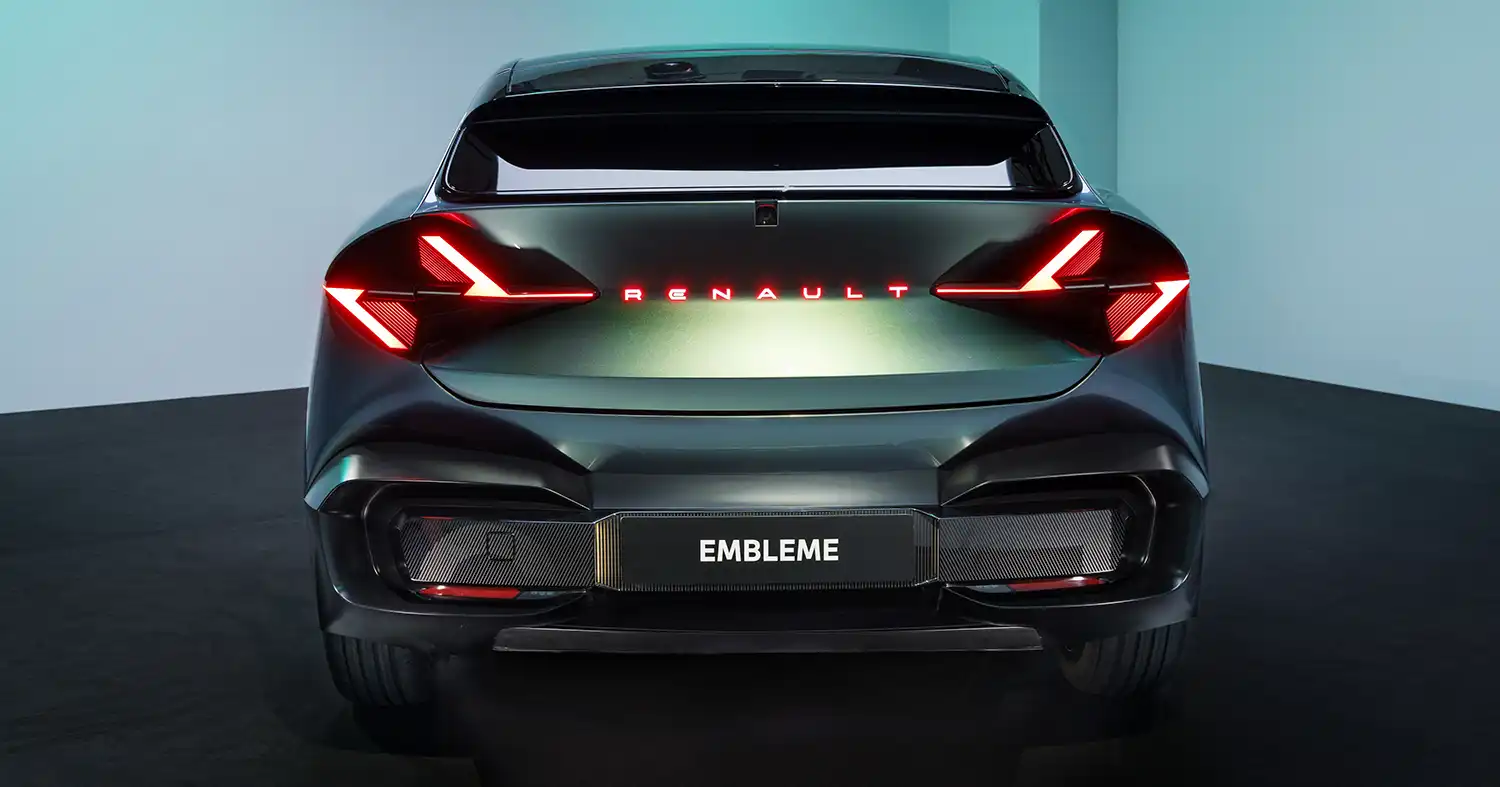
Summary:
- Renault Embleme is a “laboratory on wheels” for low-carbon mobility.
- Aims for a 90% reduction in lifecycle greenhouse gas emissions.
- Features a dual-energy electric-hydrogen powertrain with a 1000 km range.
- Employs 50% recycled materials and is over 90% recyclable.
- Achieves a 70% reduction in the carbon footprint of parts production.
- Incorporates innovative eco-designed components from various partners.
- Showcases a large openR panorama screen and a minimalist “Shy Tech” interior.
- Powertrain components are manufactured locally in France.
- Demonstrates Renault’s commitment to carbon neutrality by 2050.
Disclaimer: The Renault Embleme is a demonstration vehicle showcasing potential future technologies and is not yet available for consumer purchase. Specifications and performance figures are preliminary and subject to change.
Source: Renault
AI Assistance: Gemini
